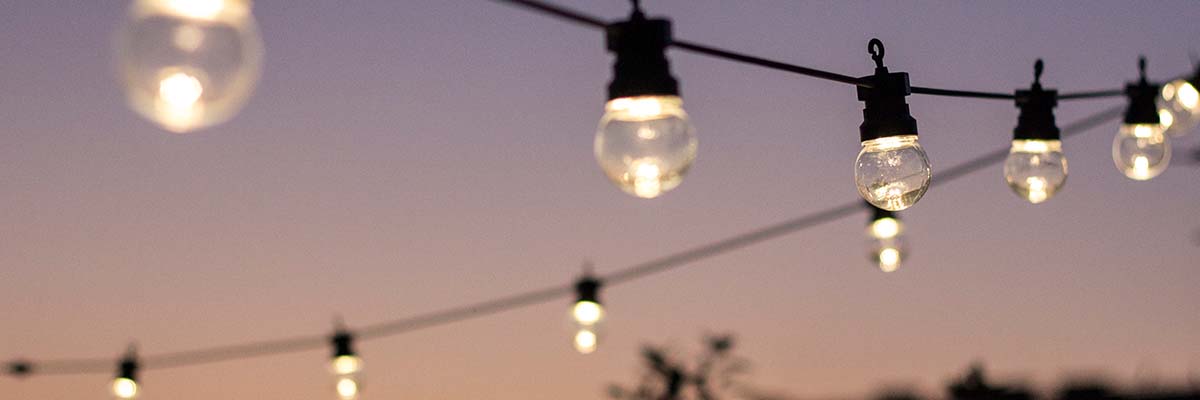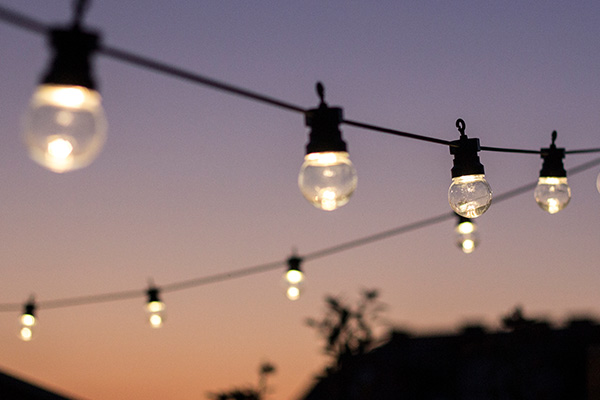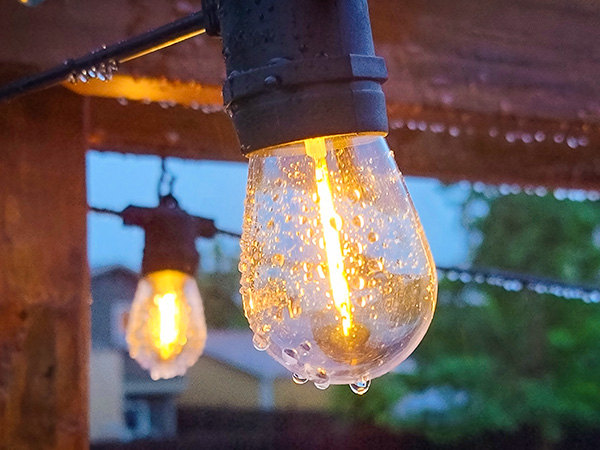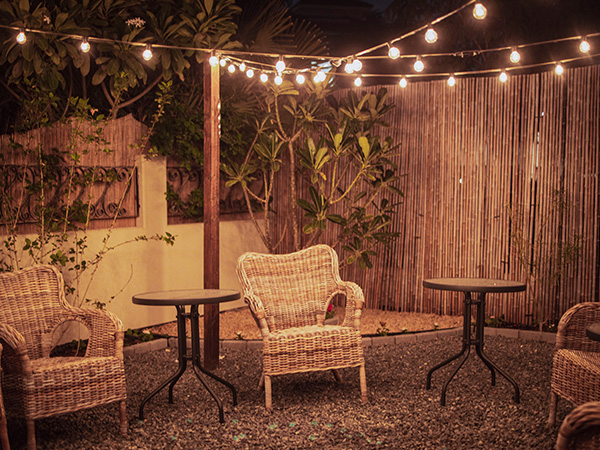

Backyard String Lights: More Than Just a Bright Idea to DIY
Your next weekend DIY project is a bright one. Backyard string lights are a weekend project idea that can go from Pinterest to your patio in just a day!
Here's how to get started with a little help from McCoy's.
Quick checklist:

- Use weatherproof lights. This isn't a time to play fast and loose with electricity. These lights will be out in all sorts of elements, from summer highs and winter lows. Use outdoor-rated string lights, bulbs, and outdoor extension cords if needed.
- Measure distances. Make sure you know how long a strand (or strands) of lights you'll need. Take notes in feet and meters so you can easily compute how many strands will cover the area you want to light.
- Test layouts before installing. It's easier to do a trial run with something lightweight like string or paracord than with the real deal. Try out your ideal light configuration and see what makes the most sense in your space.
Your final decision is how your string lights will be supported. Depending on your current backyard infrastructure, you have several options.

Should You String Lights Along a Fence or Wall?
Small backyards or patios can feel hemmed in by fences or walls that offer a bit of privacy from close neighbors but can also feel cramped. Add simple ambiance with string lights, and use what you already have to hang them. Use hooks to hang the lights along walls, but make sure the hook material is weather-resistant and won't rust.
- Screw hooks can be installed into almost any surface, including wood, brick, or concrete.
- If you rent and can't make big holes in walls, use removable hooks made for outdoor spaces, or use small loops of string over the light cord to attach the lights to a hook or post.
- If you can hammer a small nail into your fence or walls, look at weatherproof nails with cable clips or plastic cord clips.


How to String Lights with Poles or Posts
Big backyards can seem like an impossible void to fill with light. But even if your space lacks nearby vertical supports like walls or fences that are ready to use, you can easily install a support system that will work.
One simple approach: you could install strong but simple push-in style lawn posts and ring your space with light, or create elegant pathways with backyard string lights. At McCoy’s, we have materials like "step-in fence posts" that are 4-feet tall or metal fence posts that could be installed to anchor lights at waist height quickly.
To raise up lights higher (9-feet tall is a standard minimum height), use poles or tall posts to string lights in any pattern. You can sink tall posts into various points in your yard to anchor the corners for an interesting pattern of lights overhead. Or you could use posts that are sunk into large, wide planters filled with concrete to create sturdy bases. This way you can add freestanding vertical support on solid patio spaces or where you can’t dig into the ground.
How to Properly Install Tall Fence Posts or Poles in Concrete
Depending on how high up your poles or posts go, and how much weight you want them to bear, you should first review our tips on installing posts into concrete to ensure a quick and easy DIY that will last the test of time.
To securely install a post in your yard, you’ll need materials including:
- Poles or ground stakes to your desired length (Check our instructions for how far down you’ll need to sink the poles or posts, and factor that in to the overall length of poles you’ll need to get.)
- Gravel
- Concrete
Tools include:
Note: Before you dig, call your local utility service (typically 8-1-1 in most areas) to have a trained professional safely check your proposed digging sites for hazards.
Basic installation instructions:
- Dig holes to an appropriate depth for your chosen post material, and the load it will need to hold up. Add gravel.
- Mix your concrete and lower the post into the hole, making sure your post is level. Brace the post to ensure it doesn’t move. Add the concrete to the hole.
- Wait for the concrete to cure completely (about 24 hours).
If you have a patio table or outdoor seating under a pergola, string lights could be an easy solution to ring or arrange above the space. You can use materials that will hold up to heat and cold like cable ties or coated wire to lash lights to points of your existing structure.
If you have older, tall trees, you can use a branch to help support your lights, but be careful not to damage the tree or impede its growth. If you want to use screw eyes to anchor points in a tree trunk, choose healthy, older trees that can withstand the strain. (Consult an arborist before you get started if you’re unsure.)
You can also use guide wires to help support your string lights. A guide wire can help loop lights under branches of a tree or across long gaps, like a wide yard.
Materials:
- Weatherproof wire (stainless steel, or PVC-coated wire like jacket cable are common) in the total length your light strings will run
- Anchoring materials for each type of point you want to use (screw eyes in a rust-proof material are common for anchoring to wood, or ties like cable ties can be used)
- Potential materials include: turn buckles, spring snaps, rope loops, cable clamps, screws and wall anchors
- Socket wrench and/or screwdriver and drill
- Zip ties to attach string lights to cable in multiple points
- Ladder
Backyard lighting comes in all sorts of shapes and sizes, and backyard string lights are just one way to brighten your space. Make sure you take a look at our full roundup of backyard lighting solutions and talk to our experts who can help you get every tool and material you need.
Get Bright Ideas on Backyard String Lights at McCoy's
We not only have you covered with garden boxes or new fence posts, but backyard lighting, too. We'll even come to you, with store-to-door delivery or curbside pickup that helps get your project going, fast!
